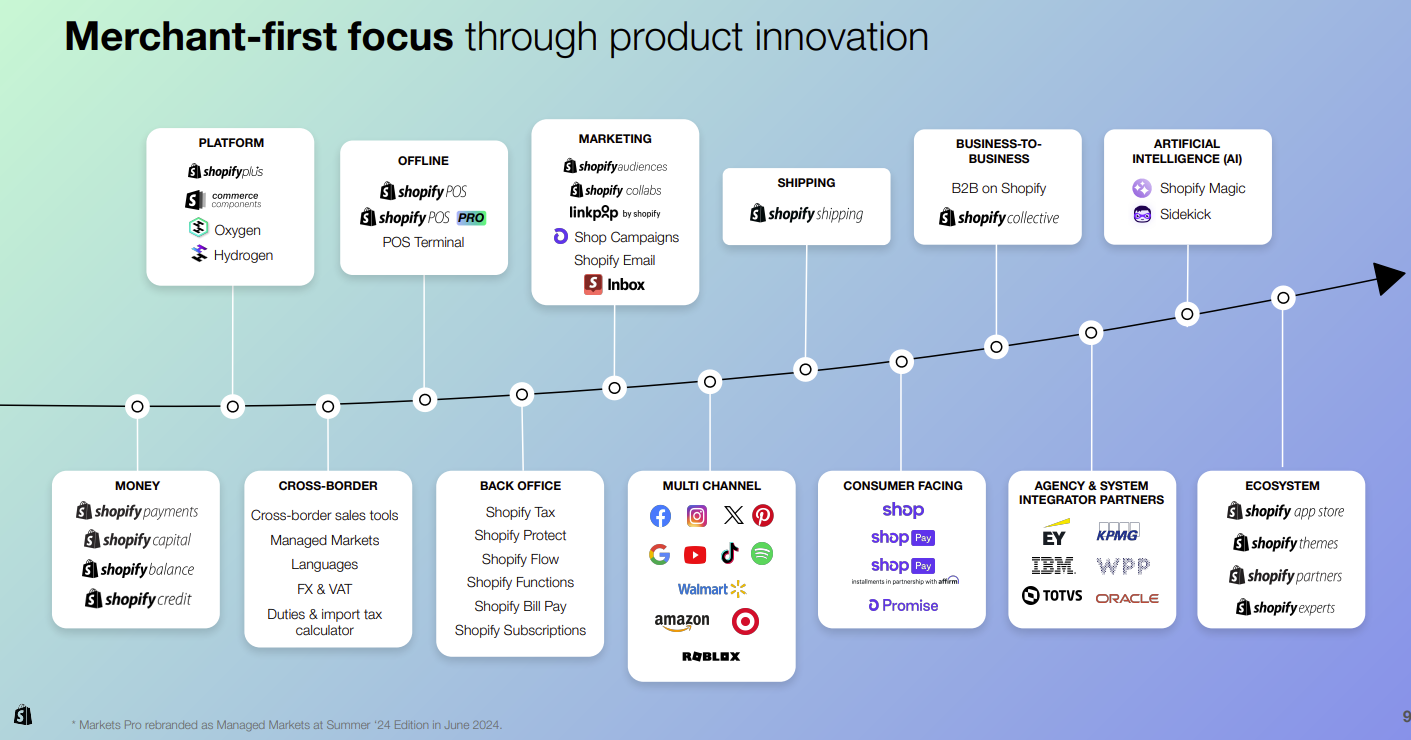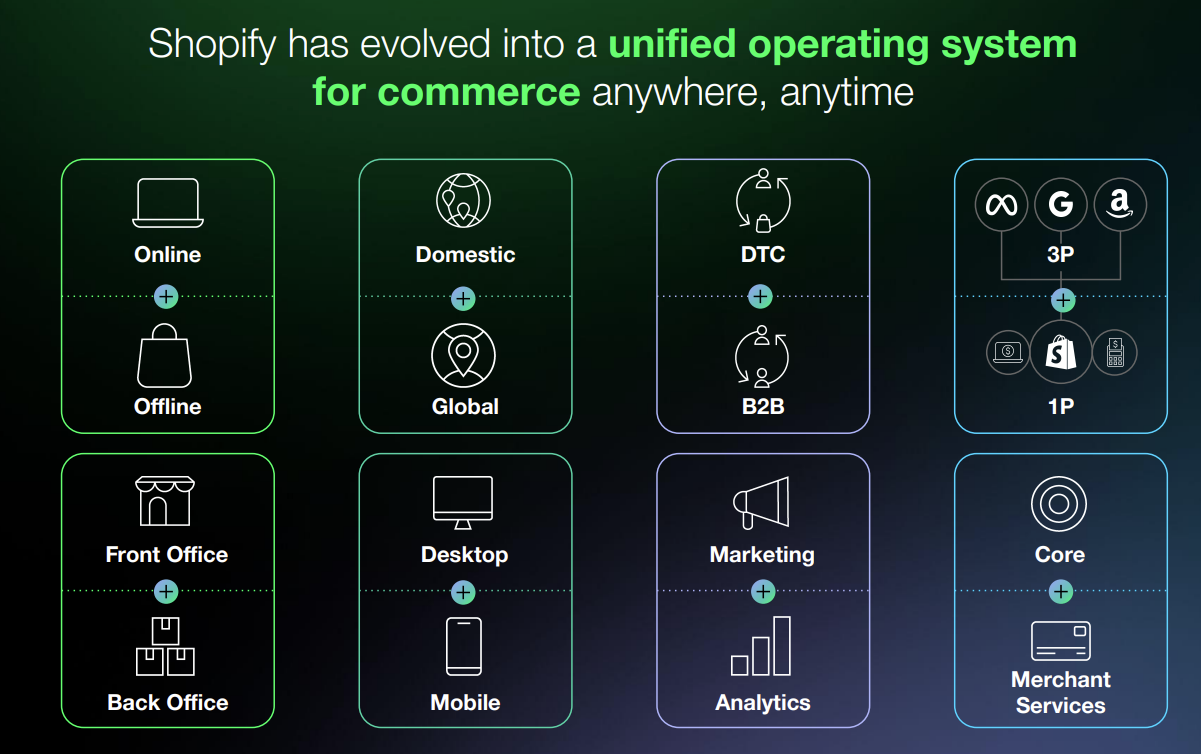Can data, AI and agility enable merchants to navigate economic volatility and scattershot tariff policies? Shopify is betting on it.
Speaking on Shopify's first quarter earnings call, President Harley Finkelstein outlined a bevy of data and AI tools to help merchants--including a bevy of small businesses--to navigate tariffs.
For Finkelstein, economic uncertainty only highlights Shopify's data platform and AI-driven agility. "We're monitoring for potential slowdowns but our data through April shows little of that. It's still early to assess the full impact of the current environment," said Finkelstein. "We're here to help merchants of all sizes absorb change rapidly and at scale."
Finkelstein also said the goal is to make merchants more resilient. Resilience has been a common theme among enterprises.
- For Shopify's Q4, customer wins, expansion does the talking
- At NRF 2025, it's a retail AI agent parade from enterprise vendors
- Constellation ShortList™ Campaign to Commerce: All-In-One-Commerce Clouds
And to build resilience, a flywheel of commerce data goes a long way. Finkelstein said that Shopify's 875 million unique buyers on the platform give the company visibility into what consumers and merchants are doing and how both sides react to economic uncertainty. "Because of our visibility, we're learning a ton," he said.
Here's what Shopify is doing to boost merchant resilience.
Product development
Shopify shipped features focused on cross-border trade and making it easier to buy local, calculate duties and ship. These features went into production days after the US announced its tariff plan, which morphed almost daily. Shopify said that when new duties are announced most merchants can be compliant within hours. Finkelstein said the goal is to allow merchants to manage markets independently.
On the Shop app, Shopify added a feature to allow buyers to filter products by country and buy local. Since the feature has rolled out "hundreds of thousands of unique sessions" have been generated said Finkelstein.
The company also launched duty inclusive pricing so merchants can set international prices including duties for transparent processing at the start of a transaction.
Shopify also launched tariffguide.ai. This tool provides duties based on a product description and country of origin so merchants can source goods based on tariff rates.

AI first
The commerce platform company took a lot of heat for its AI-first memo, but Finkelstein said Shopify is transforming its processes with AI. Finkelstein highlighted the following efforts.
Shopify built a dozen of model context protocol (MCP) servers that make the company's work accessible to AI. "Anyone within Shopify can ask questions, find resources and leverage those tools for greater efficiency. This reflects the use of AI goes well beyond internal improvement. It supercharges our team's capabilities and drive operational efficiencies, keeping us agile," said Finkelstein.

On the merchant side of AI, Shopify overhauled its AI engine for deeper reasoning, enhancing processing of large data sets and supporting multiple languages. The AI engine powers Shopify Sidekick, the AI support copilot, for merchants as well as employees. "Our monthly average users of Sidekick continue to climb more than doubling since the start of 2025," said Finkelstein. "Now this is still really early days, but the progress we are making is already yielding some really strong results from merchants, both large and small."
Shopify also closed the acquisition of Vantage Discovery, which has technology that accelerates the development of AI multi-vector search across search, APIs, shop and storefront search.
Shopify reported a first quarter net loss of $682 million on revenue of $2.36 billion, up 27% from a year ago. Adjusted net income was $226 million.
As for the outlook, Shopify projected second quarter revenue growth in the mid-twenties percentage range. The company didn't provide an outlook for 2025.


